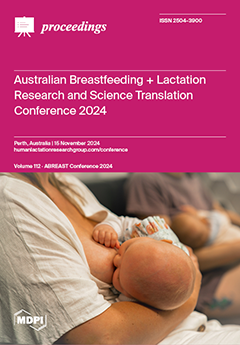Vacuum-assisted and forceps-assisted vaginal births are associated with higher rates of formula supplementation and shorter breastfeeding duration compared to unassisted vaginal births; however, the reasons for this are unclear. Factors such as maternal knowledge, partner support, and parity significantly influence breastfeeding initiation and duration. The prevalence of perineal trauma, neonatal and maternal birth complications, and decreased birth satisfaction is higher after assisted births and may also impact breastfeeding outcomes. Given the limited research on the specific effects of different vaginal birth modes on breastfeeding, this study aimed to examine women’s experiences of establishing breastfeeding after unassisted, vacuum-assisted, and forceps-assisted vaginal birth. A mixed-methods study design was employed using an anonymous online questionnaire, which included binary, multiple choice, and open-ended questions, and Likert scale items. Using social media, we recruited Australian women who had an unassisted, vacuum-assisted, or forceps-assisted birth within the last year. Details of participant demographics, breastfeeding history, initiation and establishment, postpartum mobility, and pain ratings were recorded. Additionally, qualitative data on postpartum recovery and breastfeeding support were analysed using an inductive thematic analysis framework. A total of 565 women were recruited between May and June 2024, of which 488 responses were retained for analysis. Thematic analysis of the qualitative responses identified four central themes that defined women’s experiences of establishing breastfeeding and were similar between unassisted or assisted vaginal birth modes: Experience of Care, Environment, Expectations, and Health Complications. A range of both positive and negative experiences of breastfeeding support, environmental factors, and expectations of the realities of breastfeeding impacted women’s experiences. For many women, various maternal and/or newborn health issues, nipple pain, and latching difficulties made breastfeeding more difficult. Commercial milk formula supplementation during the hospital stay was more prevalent after a forceps-assisted birth when compared to unassisted vaginal birth (41% vs. 17%, respectively;
p < 0.001). Further, during the first two weeks at home, commercial milk formula supplementation was more prevalent after both forceps-assisted (26%) and vacuum-assisted (23%) births than after unassisted vaginal birth (8%,
p < 0.001). Pain ratings in the early days following birth and in the first two weeks at home were significantly higher for the forceps-assisted group than for the other vaginal birth modes (
p ≤ 0.005). Women that had an unassisted vaginal birth with an intact perineum had the lowest pain ratings in the early days and weeks after birth, while pain ratings were similar between women that had a vacuum-assisted birth and those who had an unassisted vaginal birth with a perineal tear or episiotomy (
p = 0.05). Early commercial milk formula supplementation is associated with shorter breastfeeding duration, while postpartum pain is known to impede maternal mobility and may partially inhibit the milk ejection reflex, potentially negatively impacting breastfeeding and increasing formula use. Therefore, women who have an instrumental assisted vaginal birth, particularly those who have a forceps-assisted birth, are at greater risk of suboptimal breastfeeding outcomes including short durations of exclusive and any breastfeeding. Improvements to early postpartum pain management, breastfeeding education, and the judicious use of commercial milk formula may improve breastfeeding and subsequent maternal and health outcomes after instrument-assisted vaginal birth.
Full article



